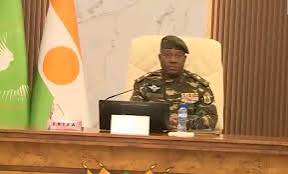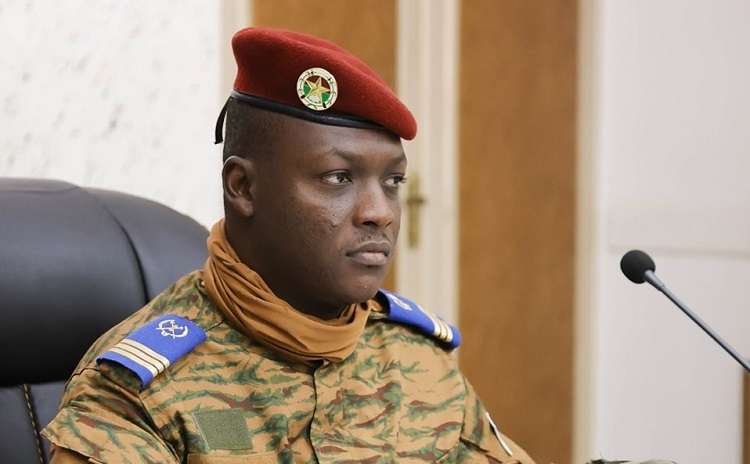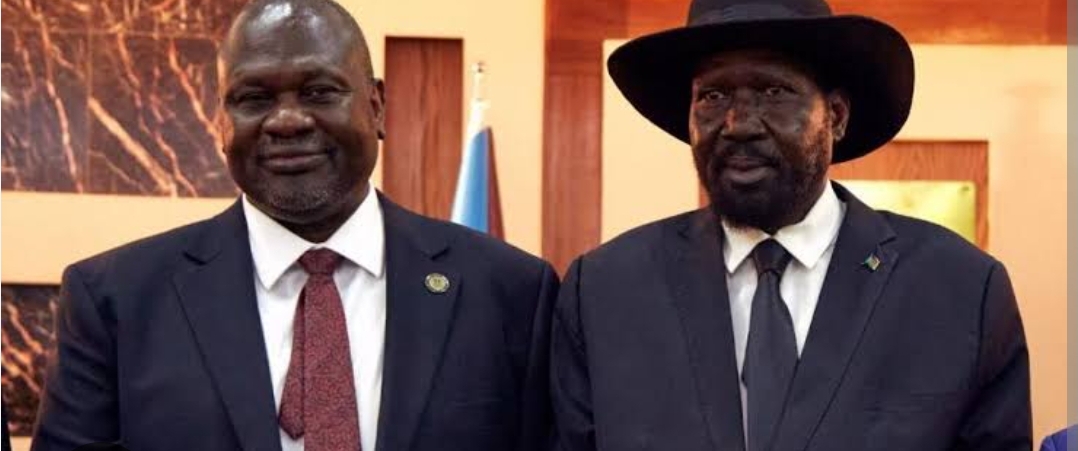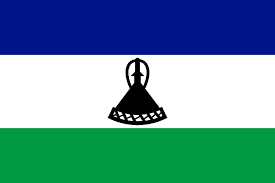African News
Niger Appeals to Nigeria for Fuel Amid Diplomatic Strain
 In a striking development, the military junta governing Niger has made an urgent appeal to Nigeria for fuel supplies, despite ongoing diplomatic tensions between the two West African neighbors. The r
In a striking development, the military junta governing Niger has made an urgent appeal to Nigeria for fuel supplies, despite ongoing diplomatic tensions between the two West African neighbors. The r
 In a striking development, the military junta governing Niger has made an urgent appeal to Nigeria for fuel supplies, despite ongoing diplomatic tensions between the two West African neighbors. The request, announced on Sunday, underscores Niger’s deepening energy crisis and highlights the complex interdependence that persists even as political relations falter.
In a striking development, the military junta governing Niger has made an urgent appeal to Nigeria for fuel supplies, despite ongoing diplomatic tensions between the two West African neighbors. The request, announced on Sunday, underscores Niger’s deepening energy crisis and highlights the complex interdependence that persists even as political relations falter.Solenzo Massacre: Video Evidence Ties Burkina Faso Militias to Civilian Killings
 Video footage circulating online revealed a grim scene in Burkina Faso’s western city of Solenzo, implicating pro-government militias in the massacre of dozens of civilians. The disturbing videos, w
Video footage circulating online revealed a grim scene in Burkina Faso’s western city of Solenzo, implicating pro-government militias in the massacre of dozens of civilians. The disturbing videos, w
 Video footage circulating online revealed a grim scene in Burkina Faso’s western city of Solenzo, implicating pro-government militias in the massacre of dozens of civilians. The disturbing videos, which surfaced on social networks shortly after the events, depict armed men in identifiable uniforms—believed to be members of the Volontaires pour la défense de la patrie (Volunteers for the Defense of the Homeland, or VDPs)—standing among bound and injured civilians, some dead, others still alive. The footage has drawn widespread condemnation and intensified scrutiny of the ongoing conflict in Burkina Faso, now in its ninth year.
Video footage circulating online revealed a grim scene in Burkina Faso’s western city of Solenzo, implicating pro-government militias in the massacre of dozens of civilians. The disturbing videos, which surfaced on social networks shortly after the events, depict armed men in identifiable uniforms—believed to be members of the Volontaires pour la défense de la patrie (Volunteers for the Defense of the Homeland, or VDPs)—standing among bound and injured civilians, some dead, others still alive. The footage has drawn widespread condemnation and intensified scrutiny of the ongoing conflict in Burkina Faso, now in its ninth year.Sudan Political and Civil Stalemates
 Sudan continues to grapple with escalating violence and a deepening humanitarian crisis as of today, with significant developments reported across the country. The ongoing conflict between the Sudanes
Sudan continues to grapple with escalating violence and a deepening humanitarian crisis as of today, with significant developments reported across the country. The ongoing conflict between the Sudanes
 Sudan continues to grapple with escalating violence and a deepening humanitarian crisis as of today, with significant developments reported across the country. The ongoing conflict between the Sudanese Armed Forces (SAF) and the Rapid Support Forces (RSF) has intensified, further complicating efforts to deliver aid and stabilize the region. Here’s a detailed update on the latest events shaping Sudan on this date.
Sudan continues to grapple with escalating violence and a deepening humanitarian crisis as of today, with significant developments reported across the country. The ongoing conflict between the Sudanese Armed Forces (SAF) and the Rapid Support Forces (RSF) has intensified, further complicating efforts to deliver aid and stabilize the region. Here’s a detailed update on the latest events shaping Sudan on this date.
Military Escalation in Khartoum and Beyond
The Sudanese Armed Forces, under the command of Major General Dr. Nasr al-Din Abdel Fattah, announced today that they are in the “final phase” of eliminating the RSF presence in Khartoum. Posts on X indicate that the SAF has intensified operations targeting RSF strongholds in the capital, with a particular focus on armored assaults. However, the RSF has not relented, launching a drone strike this morning on a communal Iftar (Ramadan meal) in the East Jireif neighborhood of Khartoum. According to local reports circulating on social media, the attack killed at least two civilians and injured several others, underscoring the ongoing threat to civilian life amid the conflict.
Beyond Khartoum, the RSF has maintained its bombardment of El Obeid, a key city in North Kordofan state, for the eighth consecutive day. Residents report heavy shelling, with no immediate end in sight, as both sides vie for control of strategic urban centers. The military escalation has raised fears of a broader collapse of fragile ceasefire agreements brokered earlier this year.
Humanitarian Crisis Worsens
The United Nations Children’s Fund (UNICEF) issued a stark warning today, with its chief describing the situation for Sudanese children as one of “unimaginable suffering.” The conflict has displaced millions, with thousands of internally displaced persons (IDPs) cut off from essential aid due to blocked supply routes. Posts on X from humanitarian organizations highlight road closures in Darfur, Kordofan, and Gezira states, where fighting has severed access to food, water, and medical supplies. Aid agencies report being unable to reach these vulnerable populations, exacerbating an already dire situation.
The violence has also devastated infrastructure, with health facilities and displacement camps targeted in recent weeks. Egypt Today Magazine reported this morning that the United Nations and other international bodies have labeled Sudan’s humanitarian conditions “deplorable,” pointing to the destruction of critical services and the displacement of over 10 million people since the conflict reignited in 2023.
Regional Tensions and Diplomatic Fallout
In a surprising diplomatic move, Sudan announced a ban on all imports from Kenya today, accusing Nairobi of hosting activities linked to the RSF paramilitary forces. According to Kenya’s People Daily, the decision reflects Khartoum’s frustration with Kenya’s perceived support for the RSF, which Sudan claims is using Kenyan territory as a logistical base. This ban could strain relations between the two nations and disrupt trade in East Africa, particularly as Kenya has been a key regional partner in humanitarian efforts for Sudan.
Meanwhile, discussions involving the United States and Israel have surfaced, with reports from AP News indicating that both countries have approached East African governments—including Sudan, Somalia, and Somaliland—about potentially relocating Palestinians from Gaza. Sudanese officials reportedly rejected the overtures, though the proposal has sparked speculation about broader geopolitical shifts in the region.
News sources today reflect a mix of despair and urgency among Sudanese citizens and observers. The hashtag #KeepEyesOnSudan has gained traction, with users calling for global attention to the crisis. One post from a local source noted the RSF’s relentless shelling in El Obeid, while another from an aid organization pleaded for “safe passage” to deliver relief. The sentiment underscores a growing frustration with the international community’s response, as well as the relentless toll of the war on civilians.
Broader Context
Today’s developments come against the backdrop of a fragile peace process in South Sudan, Sudan’s neighbor, where tensions between President Salva Kiir and Vice President Riek Machar threaten to unravel a 2018 peace deal. The Economist warned yesterday that a new civil war in South Sudan could merge with Sudan’s conflict, creating a catastrophic regional crisis. While not directly tied to today’s events, this context highlights the interconnected instability across the Horn of Africa.
Looking Ahead
As of 7:28 PM WAT on March 14, 2025, Sudan remains at a critical juncture. The SAF’s claims of nearing victory over the RSF are met with skepticism given the paramilitary’s continued aggression, and the humanitarian toll continues to mount. With supply routes blocked, civilian casualties rising, and diplomatic tensions flaring, the international community faces increasing pressure to intervene. Whether today’s developments signal a turning point or a further descent into chaos remains uncertain, but the plight of Sudan’s people is undeniable.
This update is based on available information as of the current date and time, drawing from our news sources and broader contextual knowledge. The situation remains fluid, and further updates may emerge as events unfold.
Comprehensive Report on Lesotho
 Lesotho, officially the Kingdom of Lesotho, is a small, landlocked country entirely surrounded by South Africa. Known as the "Kingdom in the Sky" due to its high elevation, it is a unique nation with
Lesotho, officially the Kingdom of Lesotho, is a small, landlocked country entirely surrounded by South Africa. Known as the "Kingdom in the Sky" due to its high elevation, it is a unique nation with  Lesotho, officially the Kingdom of Lesotho, is a small, landlocked country entirely surrounded by South Africa. Known as the "Kingdom in the Sky" due to its high elevation, it is a unique nation with a rich history, diverse geography, and a complex socio-economic landscape. This report provides an in-depth overview of Lesotho’s geography, history, government, economy, society, and contemporary challenges.
Lesotho, officially the Kingdom of Lesotho, is a small, landlocked country entirely surrounded by South Africa. Known as the "Kingdom in the Sky" due to its high elevation, it is a unique nation with a rich history, diverse geography, and a complex socio-economic landscape. This report provides an in-depth overview of Lesotho’s geography, history, government, economy, society, and contemporary challenges.-
Location and Size: Lesotho is located in Southern Africa, enclaved within South Africa. It spans an area of approximately 30,355 square kilometers (11,720 square miles), making it slightly smaller than Belgium or the U.S. state of Maryland.
-
Topography: Lesotho is the only country in the world entirely above 1,000 meters (3,281 feet) in elevation. Its lowest point, at 1,400 meters, is the highest "lowest point" of any nation. The country is dominated by the Drakensberg and Maloti mountain ranges, with Thabana Ntlenyana, at 3,482 meters (11,423 feet), being the highest peak in Southern Africa.
-
Climate: Lesotho experiences a temperate climate with distinct seasons. Summers (October to April) are warm and rainy, while winters (May to September) are cold and dry, with snowfall common in the highlands. The country is prone to periodic droughts, which impact its rural population.
-
Natural Features: Lesotho is crisscrossed by rivers, including the Orange (Senqu) River, and is home to notable landmarks like the Maletsunyane Falls, one of the highest single-drop waterfalls in the Southern Hemisphere at 192 meters (630 feet). The Lesotho Highlands Water Project, a major infrastructure initiative, harnesses these water resources to supply South Africa and generate hydroelectric power.
-
Early History: Lesotho’s origins trace back to the early 19th century when King Moshoeshoe I united various Sotho-speaking groups to form the Basotho nation. He established a stronghold at Thaba Bosiu, resisting Zulu and Boer incursions during a period of regional upheaval known as the Lifaqane (circa 1820s).
-
Colonial Period: In 1868, facing pressure from Boer settlers, Moshoeshoe I sought British protection, leading to the establishment of Basutoland as a British protectorate. This arrangement preserved Basotho autonomy while shielding them from incorporation into South Africa.
-
Independence: Lesotho gained independence from the United Kingdom on October 4, 1966, becoming a constitutional monarchy with Moshoeshoe II as king and Chief Leabua Jonathan as prime minister. The country adopted its current name, the Kingdom of Lesotho.
-
Post-Independence: Lesotho’s political history has been turbulent, marked by coups, military rule, and periods of instability. Notable events include the 1970 suspension of the constitution by Jonathan, the 1986 military coup, and the 1998 foreign intervention following disputed elections. Since the 1990s, Lesotho has transitioned toward democratic governance, though coalition governments have often been fragile.
-
System: Lesotho is a constitutional monarchy with a parliamentary system. King Letsie III, who ascended the throne in 1996 after the death of his father Moshoeshoe II, serves as a ceremonial head of state with no executive or legislative powers. The prime minister, currently Samuel Ntsokoane Matekane (since October 2022), is the head of government.
-
Political Landscape: The Revolution for Prosperity (RFP) party, founded by Matekane in 2022, leads a coalition government with the Alliance of Democrats (AD), Movement for Economic Change (MEC), and Basotho Action Party (BAP). The October 2022 elections were deemed peaceful and credible by observers, marking a shift from years of political instability.
-
Challenges: Lesotho has faced frequent political crises, including attempted coups (e.g., 2014) and no-confidence votes. Matekane’s administration has prioritized anti-corruption measures, economic recovery, and security sector reform.
-
Legal System: The judiciary is independent, with a hybrid system blending Roman-Dutch law (from colonial influence) and customary Basotho law. The Court of Appeal includes South African jurists, and there is no trial by jury—judges rule alone or with observers in criminal cases.
-
Overview: Lesotho is classified as a lower-middle-income country with a nominal GDP per capita of approximately $1,045 (2022 World Bank estimate). Its economy is heavily reliant on subsistence agriculture, textile manufacturing, and remittances from citizens working in South Africa.
-
Key Sectors:
-
Agriculture: Employs about 70% of the population, though mostly subsistence-based. Key exports include wool and mohair. Droughts and soil erosion pose significant challenges.
-
Textiles: Lesotho is a major exporter of garments to the U.S. under the African Growth and Opportunity Act (AGOA), making it the second-largest AGOA textile exporter after Kenya.
-
Water and Energy: The Lesotho Highlands Water Project generates revenue by supplying water to South Africa and hydroelectricity domestically.
-
Mining: Diamonds contribute modestly to GDP, though the sector is underdeveloped.
-
-
Trade: Lesotho is a member of the Southern African Customs Union (SACU), which provides significant revenue, and has a trade agreement with the U.S. via the Trade, Investment, and Development Cooperative Agreement (TIDCA).
-
Challenges: High unemployment (around 23%), poverty (49.7% below the poverty line in 2017), and dependence on external aid and SACU revenues limit economic resilience. Recent efforts focus on attracting foreign direct investment (FDI) through streamlined business processes and renewable energy development.
-
Population: Approximately 2.3 million (2023 estimate), with 70% living in rural areas and 30% in urban centers like Maseru, the capital.
-
Ethnicity and Language: The population is predominantly Basotho (99%), with Sesotho and English as official languages. Small minorities include Zulu, Xhosa, and European descendants.
-
Religion: Christianity dominates (over 90%), with denominations including Roman Catholic, Protestant, and indigenous African churches. Traditional beliefs persist in rural areas.
-
Education: Primary education is free and compulsory, with an adult literacy rate of 82% (2009). Female literacy (84.93%) exceeds male literacy (67.75%), though access to higher education remains limited.
-
Health: Lesotho has one of the world’s highest HIV/AIDS prevalence rates (around 20% of adults), though it achieved epidemic control by 2020 under UNAIDS’ 90-90-90 targets. Life expectancy is low (54 years), and neonatal and maternal mortality rates are among the highest globally.
-
HIV/AIDS: Despite progress, HIV remains a public health crisis, compounded by gender-based violence (GBV), which affects one in three women. The 2022 GBV legislation awaits royal assent.
-
Economic Vulnerability: Droughts, unemployment, and reliance on South Africa expose Lesotho to economic shocks. Food insecurity affected 640,000 people in 2019-2020 due to poor harvests.
-
Political Stability: While the current government has restored some confidence, historical instability and corruption linger as risks.
-
Climate and Environment: Droughts and overgrazing threaten agriculture and rural livelihoods. The government is investing in climate-resilient infrastructure.
-
Human Rights: The constitution guarantees freedoms of speech, assembly, and religion, though enforcement varies, especially in rural areas under customary law. Child labor, forced marriage, and trafficking persist as challenges.
-
South Africa: As an enclave, Lesotho’s economy and security are intertwined with South Africa. Proposals for economic integration have surfaced, notably in 2010 amid the HIV crisis.
-
United States: The U.S. supports Lesotho through PEPFAR (HIV/AIDS relief) and the Millennium Challenge Corporation (MCC), with a $362.5 million compact (2008-2013) and a new one in 2024 focusing on health, horticulture, and private sector growth.
-
Organizations: Lesotho is a member of the United Nations, African Union, Southern African Development Community (SADC), and Commonwealth of Nations.

